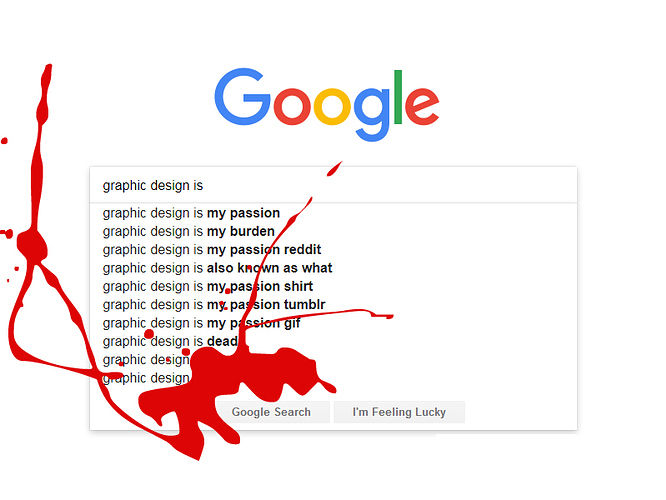Now that there are websites like Canva, companies can basically get an intern with little knowledge to clunk out a logo in an hour. I see that shaking things up.
How do you reckon? Isn’t canva some online image editing site?
I have mixed feelings on things like Canva. Yes, interns can make nice-looking cookie-cutter graphics for social media and other more pedestrian, common-place purposes, which does cut into the work designers might have done.
On the other hand, good custom design has never really been about making nice-looking odds and ends. Good design is about thinking through problems and solving them. Neither Canva nor an unskilled intern can do that.
As for logos, they’re about much more than coming up with nice-looking shapes or stylized drawings. A logo is just one piece of a company’s overall visual branding which, in its entirety, is far more important to consider, plan and execute than simply coming up with a stand-alone logo. Not all clients are looking for that kind of holistic integration, of course, but like I mentioned, good, custom design has never been a good fit with piecemeal work anyway.
If you want an inexpensive suit that’s reasonably good, head to JC Penny or Macy’s. Want one that’s custom made to fit, go to a good tailor. Want to pull out the big bucks and have a clothing designer make a one-of-a-kind suit, hire a fashion designer.
Graphic design is not immune to this kind of mass production and automation. At the higher levels, however, until artificial intelligences gets a whole lot smarter than it is today, I’m not all that worried.
You’re in a good position to not be worried. For those with less job security, demand for customization is becoming more the exception and less of the general rule. Eventually customization will be automated also.
Which is exactly why I mentioned my mixed feelings about it.
We have social media specialists where I work who use Canva all the time. For what it does, it’s cost-effective and saves the designers’ time for more productive tasks.
Then again, I think we have to remember that there was no such thing as social media graphics a decade ago. Probably, at least half the designers working today are working on things that didn’t exist or barely existed a generation ago. The entire profession has reinvented itself since I went to design school, way back in the Pleistocene Era, when cave paintings were the hot new thing.
It’s a bit philosophical, but times change, and new opportunities arise as old ones disappear.
Demand for different kinds of content and greater quantities of content might still equate to a shrinking market for designers if automation can fill the demand.
These are all very good questions. I know from experience that designing for that extra quality has fallen victim to two things. Designers being unaware certain high-end capabilities exist, and the current concept that “good enough” is good enough.
A lot of times there are technical capabilities that could be applied to the handling of a design if the designer were aware of them. Likewise, there are just some things that can’t happen on a physical real world application of a design created on a monitor.
Audience notice? Depends on the demographic you’re trying to hit. If you are trying to sell a low end used automobile, you aren’t going to use the same materials and methods you would use to sell a new Mercedes. Would that extra quality be noticed if trying to decide between this Mercedes or that BMW? Try selling either using the same materials you’d use for that used clunker and you might notice a difference in audience choice.
As for automating customization…
The only “customized” things that will be automated are the things that make money. If there is very little call for a customized process, it will not be worth the investment to automate it. This is happening even now, there are skills out there being lost because there is so little call for them now that no one is taking up the art. Custom metal finishes used in the lettering industry is one good example. Another would be neon lighting. I used to order a lot more custom metal and neon than I do now, and some things these days, I’d have to go to an artist rather than a metal fabricator to produce them. And the artists are few and far between.
Unfortunately, technology changes so fast and the options have become so diverse that it’s difficult to keep up. Even with the more meaningful and substantive changes, there’s a lag time for people to fully appreciate and use them.
Sorry, I’m not understanding what you’re asking.
I suppose this depends on the audience and what “quality” means in any given situation.
For example, a designer might create a beautiful products sales brochure on expensive stock that uses everything from die cuts to embossing to spot varnishes to tipped-in photos. It might even win an award at the local art director’s club annual show. So in one sense, this a quality brochure. But if the measure of quality is how well the brochure sold gadgets, it might very well not have performed as well as something much less expensive to produce.
Again it depends on the audience and the objectives. There are lots of choices in almost any design problems. It’s the designer’s role to design the best, most effective and most cost-effective solution to the problem — whatever that problem might be.
“Prediction is very difficult, especially if it’s about the future.” – Nils Bohr
So much for breaking into making video game content:
